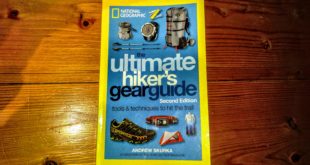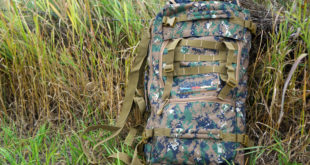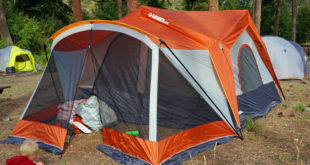I like to get my hands on survival books and so the first on my list was the SAS Survival Handbook. I was gifted a copy by my brother-in-law and his wife (thanks G&T) and started to work reading it. Well, I’ve read through it finally and it’s time for a review of probably the most definitive survival manual out there, written by probably the most well versed expert in survival, John “Lofty” Wiseman.
Just the Facts
This self-described “definitive survival guide and essential resource” covers the following:
- Preparation: What a person needs to survive, including preparations that everyone should make
- Preparation in its context: This covers what you’ll need to prepared for all types of survival situations
- Setting up Camp: The A to Z of setting up your camp. From making a survival shelter to putting it in its right place to fashioning survival tools.
- Eating: The dos and don’ts of wild edibles. We’re talking plants and animals from all around the world.
- Travel: This covers hiking safety in all its forms.
- First Aid: A very comprehensive look at everything from treating wounds to tropical diseases to poisonous animals.
- Natural Disasters: How to deal with a natural or human disaster. How deep do you need to dig down to protect yourself from a nuclear blast?
Review
John Wiseman wrote this book based on his 26 years of experience with the SAS (British Special Air Services). This stuff is what they would learn for their survival training and you can see it when you flip through a couple pages. This is your encyclopaedia of Survival guides. At 576 pages and with color drawings this will keep you busy on many an evening as you make your way through clear and very thorough instructions. It is a wealth of information that could get you out of pretty much any situation if you can follow its advice.
Don’t confuse it with a pocket guide or the Coles notes versions (like Ray Mears’ “The Outdoor Survival Handbook” that gives you the basics). This is a good read, but it leaves no stone unturned and no possibility unaddressed. But it does it in a way that makes it easier to remember. I say easier because it is over 500 pages of details. But, for example it uses acronyms like PLAN to help you remember the basics of survival (P – Protection, L – Location, A – Acquisition and N – Navigation). It also looks at what to pack in a personal survival kit (separate from a first aid kit).
Then, it addresses the tools you’ll need when you are surviving. He mentions tips on finding water that I had never heard of before as well as all the standard explanations you would expect. He even addresses urban survival situations, which for the SAS would be a likely scenario to encounter.
His climate and terrain section is excellent. It hits everything you would need to navigate and travel in all terrains and climates. It even gives guide about what type of food to look for. Using a regular rope to abseil, how to decide what side of a snow pack to set up camp on to how much water you lose a day in desert travel. This doesn’t do it justice, it’s really excellently written.
Food. I don’t know what to say, the food section covers 130 pages and aside from a list of wild edibles (flora and fauna) it gives a guide on how to test new plants to see if they’re edible. Oh and this section also lists animals tracks (helps for identify animals while on the hunt). Oh and it tell you how to make quite a few different types of traps for small, medium and large animals.
The camp craft is another section that drew my attention. Lots of time was dedicated to putting together clear diagrams and guides to shelter making, fire lighting, cooking and preserving foods, hygiene, tools to ropes and knots.
It has its own first aid manual including poisonous plants and animals and wild remedies; Again, in color.
Finally, no guide would be complete without a rescue section. Why go through all the work of surviving if you don’t know how to be found (assuming you want to be found). A good amount of time is spent on the different signalling codes which show rescue and first aid workers what it is you need so they can get it to you. A must if you’re trapped in an area where no one can land and they can only drop of supplies.
My Conclusion
This one stays in my desk drawer. It’s my encyclopaedia. If there is something I want to remind myself of or concrete in my mind I go to this book. The detail is just too good not to. The diagrams are simple, the explanations are that of someone who has taught and used these skills for a long time. You can read this on two levels: A bathroom reader for those interested on picking up some ideas or as a course book for anyone who wants to become an expert in these things.
The only thing that disappointed me about this book was the lack of compass theory. It spent a good amount of time on making a compass or finding north, but where it was lacking (possibly an oversight as it was written from the SAS) is in how to use the compass for navigation. I prefer “The Outdoor Survival Handbook for that aspect.” I always try to carry a map and compass, but if I can’t triangulate my position then It isn’t a great help. 1 complaint in over 500 pages isn’t that bad in my books.
As it claims, the SAS Survival Handbook is the definitive survival guide. It is a great resource for a serious outdoor person and a fun casual reader (although a bit dry at times) for the hobbyist. If you are concerned with safety and emergency survival you need this book on your bookshelf.
Pick up a copy at Amazon:
 The Outdoor Adventure Giving you tips, tricks & recommendations to help make adventuring in the Outdoors fun, safe & exciting for you and your kids.
The Outdoor Adventure Giving you tips, tricks & recommendations to help make adventuring in the Outdoors fun, safe & exciting for you and your kids.





